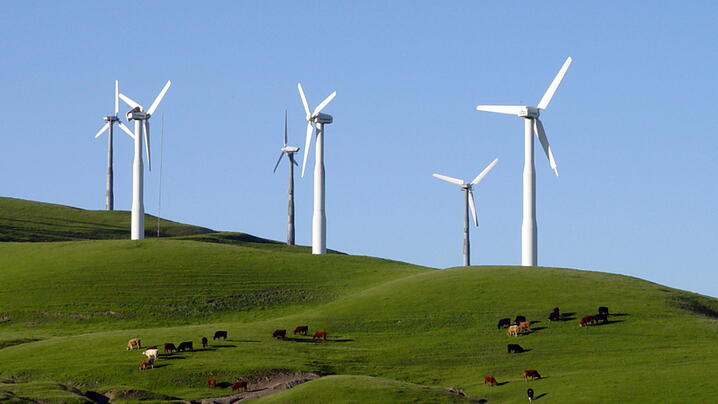
Back in 2016, ICMA in partnership with the Smart Cities Council, conducted a survey that found that 38.7 percent of communities have smart cities applications in active deployment in the energy sector, while 37.5 percent have smart cities applications in active deployment in the water and wastewater sectors. The survey even found that nearly a third of communities—29.7 percent—cited the water and wastewater sector as their top smart cities priority. While the energy and water sectors may garner less attention than other areas of the smart cities conversation, such as autonomous and connected vehicles, they provide great opportunities for the deployment of smart cities applications.
Boulder, Colorado; Cambridge, Massachusetts; Sacramento, California; and Arlington, Texas, are communities that are deploying smart cities applications to support energy, water, and wastewater operations, and they are reaping the benefits. These include achieving climate, energy, and sustainability goals and addressing challenges related to aging infrastructure and the infrastructure financing gap.
While deploying smart technologies in the water and energy sectors has its benefits, they also have their barriers, including the need to work with public utilities and data security concerns. According to American Public Power Association, nearly 70 percent of electric customers in the United States are served by public (investor-owned) utilities. This may limit the ability of a community to expand energy-related efforts beyond city facilities and operations and can pose challenges to accessing data collected by the utility on community-wide energy usage. Data privacy and security concerns, which exist across smart cities applications, are also paramount when it comes to smart cities applications for energy and water. The energy, water, and wastewater sectors represent critical infrastructure, and data generated include information about system vulnerabilities.
Still, the energy, water, and wastewater sectors are sectors where communities are actively deploying smart cities technologies, including smart building technologies, energy-efficient intelligent streetlights, AMRs, and SCADA systems. They also represent areas of high potential for continued deployment of these technologies. From the report Smart Communities: Rethinking Infrastructure, here are several insights and lessons learned by communities for communities considering the deployment of smart technologies in the water and energy sectors:
- Smart cities applications require partnerships. Smart cities applications for energy and water are inherently cross-disciplinary and require communication and collaboration across departments. These applications rely on a robust IT architecture and can impact operations that fall under the jurisdiction of multiple departments, including public works, public safety, sustainability, and transportation. They can also benefit from external partnerships, which can help leverage additional resources and support data analytics, technology transfers, and pilot projects. Cambridge, Boulder, and Arlington are partnering with local universities. In Cambridge, the city is working with local technology companies, and in Boulder, the city is working with the nearby federal laboratories.
- Technical expertise is essential. As new technologies are deployed, it is important to invest in staff training and make sure that there are people who fully understand how to use the technologies and related applications. This helps ensure that the smart cities technologies are used to their fullest potential, as well as that issues can be addressed when they arise.
- Smart cities technologies have multiple co-benefits. The energy-water nexus makes the connections clear between investments in energy and water infrastructure—technologies that improve systems operations and increase performance in one sector can create efficiencies in the other. Other co-benefits may be less clear but are worth examining when investing in smart cities technologies for energy and water. These include the impacts of energy-efficient intelligent streetlight retrofits on public safety and of EV infrastructure on transportation. Looking at data across platforms and functions can help identify these synergies.
- Smart cities technologies are continuing to evolve. As communities are actively deploying smart cities technologies—nearly 40 percent of communities have deployed these technologies to support their energy, water, and wastewater operations—these technologies are continuing to evolve. New generations of the products will offer new and improved functionality, as well as new challenges. They will also require continued investment, as will any other form of infrastructure.
All this speaks to a basic point: If you want to provide a safe, secure, and prosperous community to keep and attract residents and workers, energy and water will play a starring role in achieving these goals, and these infrastructure assets can be used to provide additional community benefits.
This content was excerpted from the report Smart Communities: Rethinking Infrastructure, written by Anna Read, AICP, Senior Program Development and Research Associate at the American Planning Association; Gulafshan Ghori, Research and Program Development Intern at the American Planning Association; and Will Fricke, Assistant Program Manager, Research, and Policy at ICMA.
New, Reduced Membership Dues
A new, reduced dues rate is available for CAOs/ACAOs, along with additional discounts for those in smaller communities, has been implemented. Learn more and be sure to join or renew today!
